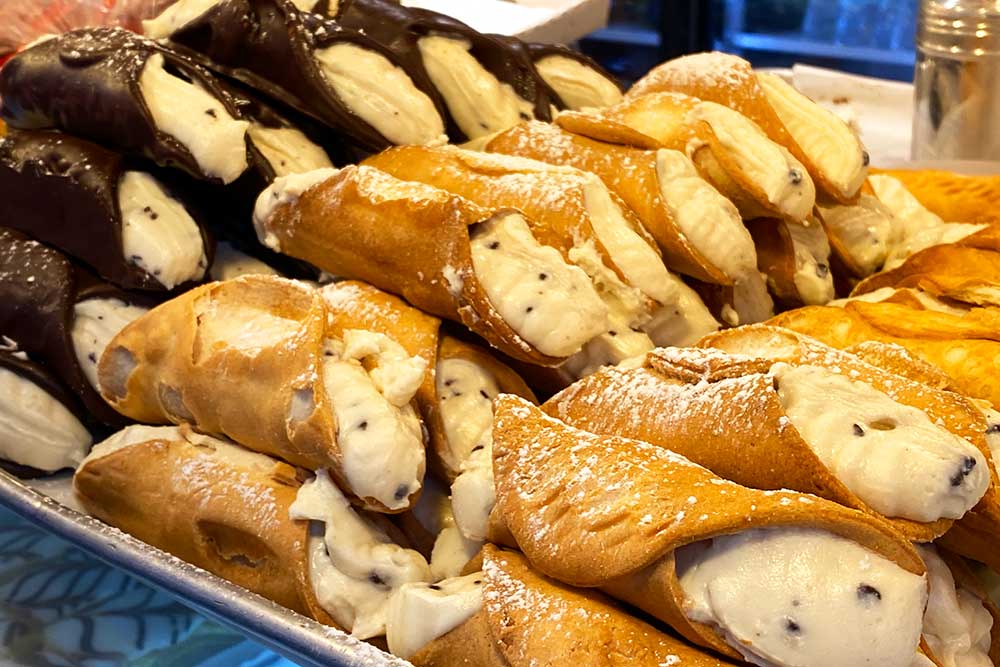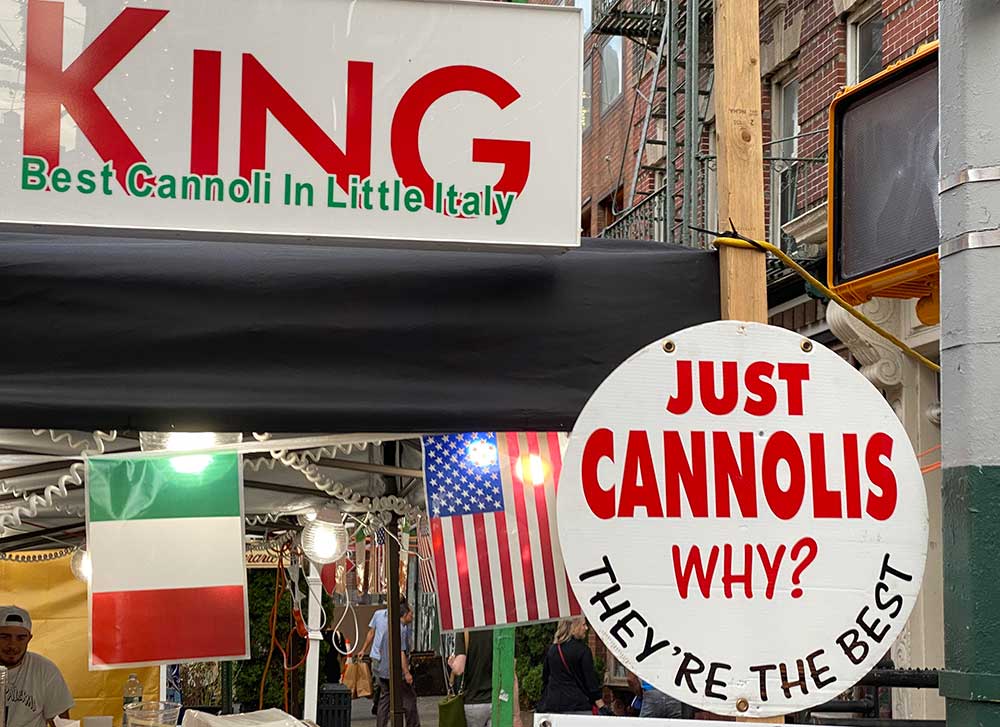San Gennaro Cannoli
By Ian MacAllen on Tuesday, November 9th, 2021 at 3:49 pm

The San Gennaro festival returned to New York City’s Little Italy neighborhood this year. The festival has been happening for almost a century was cancelled in 2020 due to the COVID pandemic.
Although the festival is perhaps best known for sausage and peppers — it was a popular dish throughout the history of the festival — the real star of the show are the pastries. Cannoli are an ideal street festival food because they are easy to eat while on the go.
The first Cannoli are thought to have originated around Palermo to celebrate Carnevale. Like with most Italian foods, there are several possible origin stories. It is possible the Moorish harem of Qalc’at al-Nissa invented the treat, or maybe it was nuns at a convent. Either way, cannoli arrived in the United States with Italian immigrants.
Cannoli were made famous by the film The Godfather. After Paulie Gatto is killed in the marshland of the New Jersey, Peter Clemenza tells Rocco Lampone to “Leave the gun. Take the cannoli.” The line was apparently improvised by the actor. A white pastry box is removed from the car.
The white pastry box is noteworthy, too, because east coast bakeries are much more likely to sell cannoli in white boxes. The pink pastry box is a result of Hollywood — not set designers, but of refugees from Cambodia. White was the color of mourning, and that’s not a great way to sell pastry. Not only that, the pink boxes were cheaper. A chain of doughnut shops staffed by Cambodian expats were searching for cheaper boxes than the standard white bakery boxes, and end up with overstocked pink boxes.
So what is a cannoli? A sheet of pastry dough is wrapped into a tube and deep fried. Once the shell is cool and hardened, it can be stuffed with a filling, usually cheese sweetened with sugar or chocolate chips. Ricotta and mascarpone are the two most common cheese fillings.
The cheese is usually combined with confectioners sugar and vanilla extract. But from there are plenty of variations. Chocolate chips can add texture. Cinnamon can add spice. Pistachios are often added directly to the filling or at the tip of the cream.
Pastry shops will often sell the shells empty and cream on the side. There is an advantage to stuffing your own cannoli. The moisture in the cheese will eventually soften the hard crispy shell of the cannoli. By filling the cannoli just before they are served, they remain fresh and crisp.

Another way of keeping the shells crispy is to coat them in chocolate. The chocolate coating acts as a barrier between the cream and the fried shell, in addition to the added flavor.
Other flavors can be added to cannoli cream turning the filling from the eggshell white to green or pink.
Cannoli are not the only pastry available at San Gennaro, though. This clamshell shaped pastry is a sfogliatelle. Some people say it looks more like a lobster tale because of the layers of flaky pastry.

The pronunciation of this pastry is a bit unique in New York and New Jersey. As Katie Parla explains, it sounds more like “sfil-ya-del”. (There are a whole lot of other words New Jersey Italians pronounce with a special sound).
Sfogliatelle are made from layers of pastry and filled with a custard. In some cases the same cheese filling that are in the cannoli, although it is better to use a special custard. Other variations include candied fruit or a lemon flavored custard.
In The Sopranos Christopher orders the pastry at a bakery with a gun in his hand. because the clerk repeatedly ignored him.
This is another pastry that may have been invented by a nun. A sister at Santa Rosa in Conca dei Marini, a cloistered nunnery, may have accidentally created it after coming across semolina flour soaked in milk.
In 1818, Pasquale Pintauro began selling a modern version of the pastry in a shop in Naples, and from there the popular treat spread.
And just in case you needed a reminder: Cannoli are the best.

If you like reading about Italian American food, check out the blog Red Sauce America where there are food stories about various Italian American foods, or if you want to read about the big story of Italian American food, check out the forthcoming book, Red Sauce: How Italian Food Became American.

